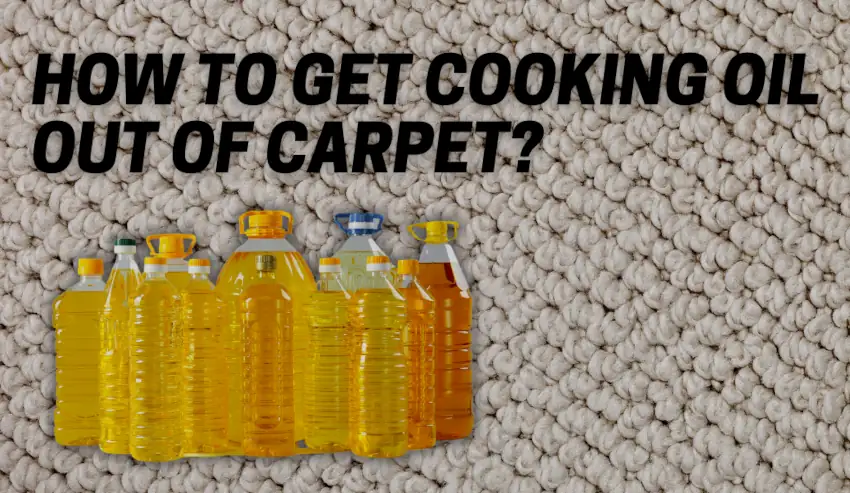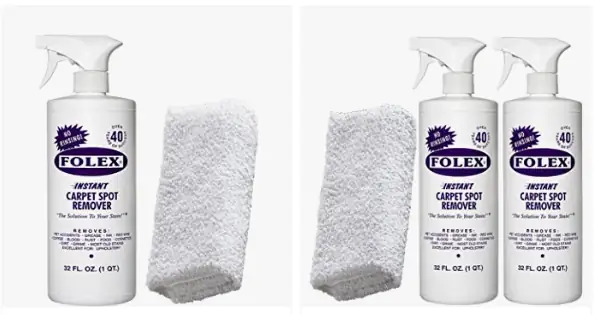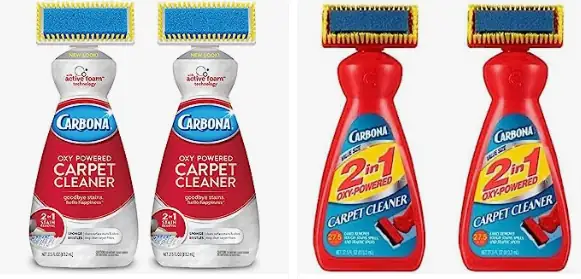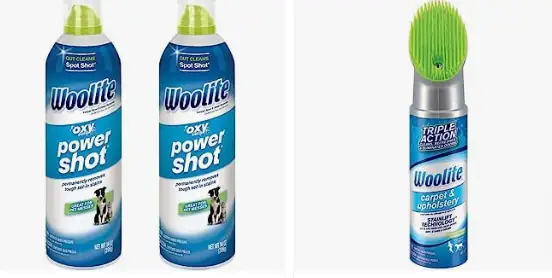Last updated on November 2nd, 2023 at 01:14 am
Cooking oil stains on carpets can be a real headache. Whether it’s a splash from a frying pan or a spill while preparing a delicious meal, the oily residue left behind can seem impossible to remove.
However, fear not! In this article, we will explore effective methods to tackle those stubborn cooking oil stains and restore the pristine condition of your carpet.
Will Oil Come Out of Carpet?
Before diving into the cleaning methods, you might wonder if cooking oil stains can be completely removed from carpets.
The good news is that with the right techniques and products, you can significantly reduce or completely eliminate oil stains from your carpet. Acting promptly and following the correct procedures are essential for successful stain removal.
Potential Damage Caused by Leaving Oil Stains Untreated
Allowing cooking oil stains to linger untreated can have detrimental effects on your carpet’s appearance and overall longevity. When left unattended for an extended period, oil stains can become deeply ingrained within the fibers.
Beyond mere aesthetics lies another problem – oily residues left untouched can attract dirt and dust particles over time. This not only makes your carpet appear dirty but also leads to a buildup that becomes more challenging to remove during regular cleaning routines.
Furthermore, if left untreated for too long or subjected to heat (such as sunlight or warm air), cooking oil stains can oxidize and turn rancid. This process may produce unpleasant odors that permeate both your carpet and surrounding space, creating an unwelcome and persistent smell.
Now that we’ve established the importance of addressing cooking oil spills on carpets promptly, it’s time to delve into effective strategies for banishing these oily intruders. Don’t worry; we’ll guide you through the steps to ensure your carpet regains its former pristine glory.
Understanding the Properties and Impact of Cooking Oil
Different Types of Cooking Oils
When it comes to cooking oils, we have a whole smorgasbord of options to choose from. Olive oil, canola oil, vegetable oil, coconut oil – the list goes on!
Each type of cooking oil has its distinct characteristics that make it suitable for specific culinary purposes.
However, when these oils find themselves spilled on your precious carpet, they all share one unfortunate similarity – leaving unsightly stains. Olive oil, for instance, is known for its viscous nature and golden hue.
It’s widely used in Mediterranean cuisine due to its delicate flavor profile. Canola oil, on the other hand, is a popular choice amongst health-conscious individuals as it contains low levels of saturated fats.
It has a light texture and mild taste that doesn’t overpower other ingredients in dishes. Vegetable oil is an all-purpose cooking staple with a neutral taste and high smoking point – ideal for deep frying and sautéing.
How Oil Penetrates Carpet Fibers and Causes Staining
Now that we’ve established the diverse range of cooking oils available to us let’s dive into how they wreak havoc on our pristine carpets once spilled. The main culprit here is their innate ability to penetrate deeply into carpet fibers like stealthy infiltrators.
When cooking oil comes into contact with your carpet’s surface, it seeps down through every nook and cranny of those delicate threads. Due to its liquid state, it quickly absorbs into the fibers like a thirsty sponge slurping up watermelon juice on a hot summer day.
This absorption process creates an unwelcome bonding between the oil molecules and your carpet fibers. As time passes without proper intervention after an oily mishap occurs (cue panic mode), the stains become more stubborn and challenging to remove.
The oil molecules intertwine themselves with the carpet fibers, forming an unbreakable bond that seems to taunt your cleaning efforts. This pesky relationship between the oil and carpet fibers is what ultimately leads to those unsightly, greasy stains we all dread.
What Dissolves Dried Cooking Oil?
When dealing with dried cooking oil stains, it’s important to start by breaking down the oil molecules before attempting to remove them.
One effective way to dissolve dried cooking oil is by using dishwashing liquid or a grease-fighting detergent.
These products contain surfactants that can penetrate the oil and break it down, making it easier to remove from the carpet fibers.
To tackle dried cooking oil stains on your carpet, follow these steps:
- Blot the Stain: Start by blotting the affected area with a clean cloth or paper towel to remove any excess oil. Be careful not to rub the stain, as this can spread it further.
- Apply Dishwashing Liquid: Mix a few drops of dishwashing liquid or grease-fighting detergent with warm water. Dip a clean cloth into the solution and gently dab it onto the stain. Allow it to sit for a few minutes to break down the oil.
- Blot the Stain Again: After the detergent has had some time to work its magic, blot the stain once more with a clean cloth or paper towel. You should start to notice the oil transferring from the carpet fibers onto the cloth.
- Rinse the Area: Once the oil stain has lifted, rinse the area with clean water to remove any remaining detergent residue. Blot the carpet with a dry cloth to absorb excess moisture.
How to Remove Cooking Oil Stains from Carpet
—
What Soaks Up Spilled Cooking Oil?
When a fresh cooking oil spill occurs, the first step is to prevent the oil from further penetrating the carpet fibers.
To do this, you need to soak up the spilled oil as quickly as possible.
Here are a few effective methods to soak up spilled cooking oil:
- Paper Towels: Grab a few layers of paper towels and gently press them onto the spill. The paper towels will absorb the oil, preventing it from spreading and seeping deeper into the carpet.
- Baking Soda: Sprinkle a generous amount of baking soda over the spilled oil. Baking soda has excellent absorbent properties and will help to soak up the oil. Leave it on the stain for a few minutes, then vacuum it up.
- Cornstarch: Similar to baking soda, cornstarch can also help absorb spilled cooking oil. Sprinkle cornstarch over the stain and let it sit for a few minutes. Once the oil is absorbed, vacuum the area.
- Kitty Litter: If you have kitty litter on hand, it can be an effective absorbent for oil spills. Simply pour a layer of kitty litter over the spill and let it sit for a while. Once the oil is absorbed, sweep or vacuum it up.
By using any of these methods, you can prevent the oil from setting into the carpet and make the subsequent cleaning process easier.
How Do You Get Dried Cooking Oil Out of Carpet?
Dried cooking oil stains can be trickier to remove compared to fresh spills.
However, with the right approach, you can successfully eliminate these stubborn stains from your carpet. Here’s a step-by-step guide on how to get dried cooking oil out of carpet:
- Scrape Off Excess Oil: Start by using a dull knife or spoon to gently scrape off any dried oil from the carpet surface. Be careful not to damage the carpet fibers in the process.
- Apply Dry Cleaning Solvent: Dry cleaning solvents are specifically designed to remove oil-based stains from fabrics and carpets. Apply a small amount of the solvent to a clean cloth and blot the stained area. Continue blotting until the oil stain begins to lift.
- Blot with Warm Water: After using the dry cleaning solvent, dampen a clean cloth with warm water and blot the area to rinse away any residue. Make sure not to oversaturate the carpet, as excessive moisture can lead to mold or mildew growth.
- Dry and Vacuum: Once you’ve removed the oil stain, allow the carpet to air dry completely. Then, vacuum the area to restore the texture of the carpet fibers.
Does Vinegar Remove Cooking Oil?
Vinegar is a versatile household ingredient that can be used for various cleaning purposes.
When it comes to cooking oil stains, vinegar can be an effective natural solution. Its acidic properties help break down the oil and remove the stain. Here’s how you can use vinegar to tackle cooking oil stains on your carpet:
- Prepare a Vinegar Solution: Mix equal parts of white vinegar and water in a spray bottle. Shake well to ensure they are thoroughly combined.
- Spray and Blot: Spray the vinegar solution directly onto the cooking oil stain and let it sit for a few minutes. Then, blot the area with a clean cloth to lift the stain. Repeat this process as necessary until the stain is gone.
- Rinse with Water: After removing the stain, rinse the area with clean water to eliminate any vinegar residue. Blot the carpet with a dry cloth to remove excess moisture.
Remember to perform a patch test in an inconspicuous area of the carpet before using vinegar or any cleaning solution to ensure it doesn’t cause any discoloration or damage.
Does Vinegar Remove Cooking Oil: Reddit Talk
Here are some main points shared about the issue on the r/chemistry subreddit. Spoiler: The opinions are contradictive:
| Main Points |
|---|
| Acids dissolve acids. |
| ‘Like dissolves like’ principle applies to substances’ dissolving. Vinegar dissolves grease due to its polar nature. Water, although not an acid, dissolves both. |
| Vinegar’s acetic acid penetrates through grease, swelling the grease layer from underneath and allowing for easy removal. Dropping the pH protonates fatty acids and triglycerides, helping to break up the grease layer. |
| Vinegar reacts with triglycerides (fingerprints and food oils) and turns off their sticky properties, making them easier to remove. |
| Acids and water are effective at removing burnt-on food particles. Removing the burnt-on crud makes it easier to collect the fats with a towel or sponge. |
| Sodium hydroxide (lye) is effective for cleaning greasy messes. Washing soda and club soda can also be used for stain removal. |
| It is not recommended to combine lye and vinegar to make an all-purpose cleaner. Mixing ammonia and bleach is also not advisable. |
| No. |
Does Hydrogen Peroxide Remove Oil?
Hydrogen peroxide is another household staple that can come in handy when dealing with cooking oil stains.
It has excellent stain-removing properties and can be effective in removing oil-based stains from carpets.
Here’s how to use hydrogen peroxide to tackle cooking oil stains:
- Spot Test: Before applying hydrogen peroxide to the stained area, perform a spot test on a small, inconspicuous part of the carpet to ensure it doesn’t cause any discoloration.
- Apply Hydrogen Peroxide: If the spot test is successful, apply a small amount of hydrogen peroxide directly to the stain. Allow it to sit for a few minutes.
- Blot the Stain: After the hydrogen peroxide has had some time to work, blot the stained area with a clean cloth or paper towel. You should start to see the oil transferring onto the cloth.
- Rinse and Dry: Once the stain has lifted, rinse the area with clean water to remove any remaining hydrogen peroxide. Blot the carpet with a dry cloth to remove excess moisture.
Hydrogen peroxide can be a powerful stain remover, but it’s always important to test it first and use it with caution to avoid any potential damage to your carpet.
What Is Dry Cleaning Solvent for Carpet?
Dry cleaning solvent for carpets is a specialized cleaning solution that is designed to remove oil-based stains, such as cooking oil, without the need for excessive moisture.
It is commonly used for spot cleaning and can be effective in breaking down and lifting stubborn oil stains from carpets.
Dry cleaning solvents are available in both spray and liquid forms. They contain solvents that can dissolve and lift oil-based stains, making them easier to remove.
When using a dry cleaning solvent, it’s important to follow the instructions provided by the manufacturer and to spot test it on a small area of the carpet before applying it to the stain.
Best Dry Cleaning Solvent for Carpet
When choosing a dry cleaning solvent for your carpet, it’s important to opt for a reliable and reputable brand. Look for solvents that are specifically formulated for carpets and mention their effectiveness in removing oil-based stains. Reading customer reviews and seeking recommendations can also help you make an informed decision.
Some popular dry cleaning solvents for carpets include:
- 1. Folex Carpet Spot Remover: This solvent is known for its effectiveness in removing a wide range of stains, including oil-based stains. It is easy to use and doesn’t leave behind any residue.
- 2. Carbona 2 in 1 Oxy-Powered Carpet Cleaner: This solvent combines the power of oxygen and active foam to lift and remove tough stains, including cooking oil. It is suitable for use on various types of carpets.
- 3. Woolite Carpet and Upholstery Cleaner: Woolite offers a range of carpet cleaning products, including a dry cleaning foam that is designed to remove stains without the need for water. It is gentle on carpets and can effectively tackle oil-based stains.
Folex Carpet Stain Remover
Carbona 2 in 1 Oxy-Powered Carpet Cleaner
Woolite Carpet and Upholstery Cleaner
Remember to carefully read the instructions on the product label and follow the recommended usage guidelines for the best results.
Conclusion
Cooking oil stains on carpets may seem challenging to remove, but with the right approach and cleaning methods, you can restore your carpet to its former glory. Whether you’re dealing with fresh spills or dried stains, the key is to act promptly and use suitable cleaning solutions.
By following the steps outlined in this article and using techniques like blotting, applying dishwashing liquid, using absorbent materials, and utilizing vinegar or hydrogen peroxide, you can effectively tackle those stubborn cooking oil stains.
Remember to test any cleaning solution in an inconspicuous area first and to always prioritize the well-being of your carpet while working towards stain removal.





